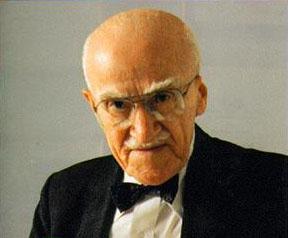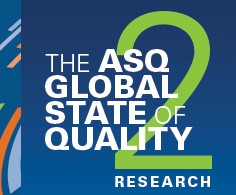Vision and Mission are important components of strategic planning. Some organizations find difficult to define them and end up misused them; while others think they are easy to write. Well, they look beautiful on the wall of any organization but, what do they really mean? What are the differences between them? Do they really give the organization and employees the focus and motivation to work every day?
Bill Troy (CEO of ASQ) in his last blog post asked to the Influential Voices the following question: Do you or your organization have a clear vision—and is it giving you the focus you need to succeed? In addition to that, many readers have asked me about the differences between Vision and Mission, so it is good opportunity to get back to the roots and have a clear understanding of those concepts.
Let’s take a look at the following table I’ve made with some of the differences:
|
VISION
|
vs.
|
MISSION
|
|
|
Definition from ASQ.org
“An overarching statement of the way an organization wants to be; an ideal state of being at a future point” Other ways (wordplay) to define it:
1. It defines WHERE an organization wants to be.
2. It is what an organization WANTS TO BECOME.
3. It is the DREAM or MENTAL PICTURE toward which the organization is moving.
|
Definition from ASQ.org
“An organization’s purpose”
Other ways (wordplay) to define it:
1. It defines what the organization DOES, WHO it does it for; and HOW it does what it does.
2. It is what an organization IS.
3. It is the definition of why the organization EXISTS currently and the boundaries within it operates.
|
||
|
The purpose is to INSPIRE and to be the emotional driver toward the organization “True North“
|
The purpose is to INFORM what the organization does.
|
||
|
Timeframe: 5, 10 or more years FUTURE oriented
|
Timeframe: 1 to 3 years
PRESENT leading toward the future
|
||
|
Questions to answer when development the statement:
– Where do we aim to be?
– What will we be in the future?
|
Questions to answer when development the statement:
– What do we do today? What business problem, human need, or desire do our products and services fulfill?
– For whom do we do it?
– How we do it? Why?
– What makes us different?
– What value do we provide?
|
||
|
When development a Vision statement you have to think about VALUES: how does your organization improve people’s lives? How do you make the world a better place?
For example: effort, respect, wealth, happiness, contribution, justice, trust, relationships, excellence, integrity, teamwork, originality, equality, honesty, freedom, strength, quality, cooperation, loyalty, etc.
|
When development a Mission statement you talk about ACTIONS.
For example: expand, create, facilitate, educate, do, produce, fulfill, support, advertise, evaluate, access, promote, apply, etc.
|
||
|
An effective Vision statement should:
– be brief and memorable
– be written in an inspirational and aspirational way
– has clarity and lack of ambiguity
– be achievable and align with organizational values and culture
NOTE: Don’t be limiting, be creative and think “out of the box”!
|
An effective Mission statement should:
– be written in present tense
– be short (1 or 2 sentences), clear and powerful
– describe exactly what the organization does.
NOTE: as similar businesses may have very similar mission statements because they essentially offer the same products or services, it is very important to focus on the question: What makes us different?
|
||
|
Both, Vision and Mission are alive; both evolve, both reinvent, both grow as the organization grows. However, as they explain the organization’s foundation, changes should be kept to a minimum.
|
|||
For examples, please take a look at this slide presentation with the Visions and Missions of the top 100 Fortune Global companies by Fortune Global 500 (2009).
The song is called “Am I Wrong” by Nico & Vinz:
– Image courtesy of Vichaya Kiatying-Angsulee / FreeDigitalPhotos.net






4 Comments
Anonymous · March 12, 2015 at 6:49 pm
thanks…………
Anonymous · June 24, 2015 at 6:51 pm
very helpful….thanks
Lora jain · March 23, 2016 at 10:39 am
in very easy way I was understood. Thanks for
Raju · April 24, 2016 at 7:32 pm
Comprehensively stated! Thanks
Comments are closed.